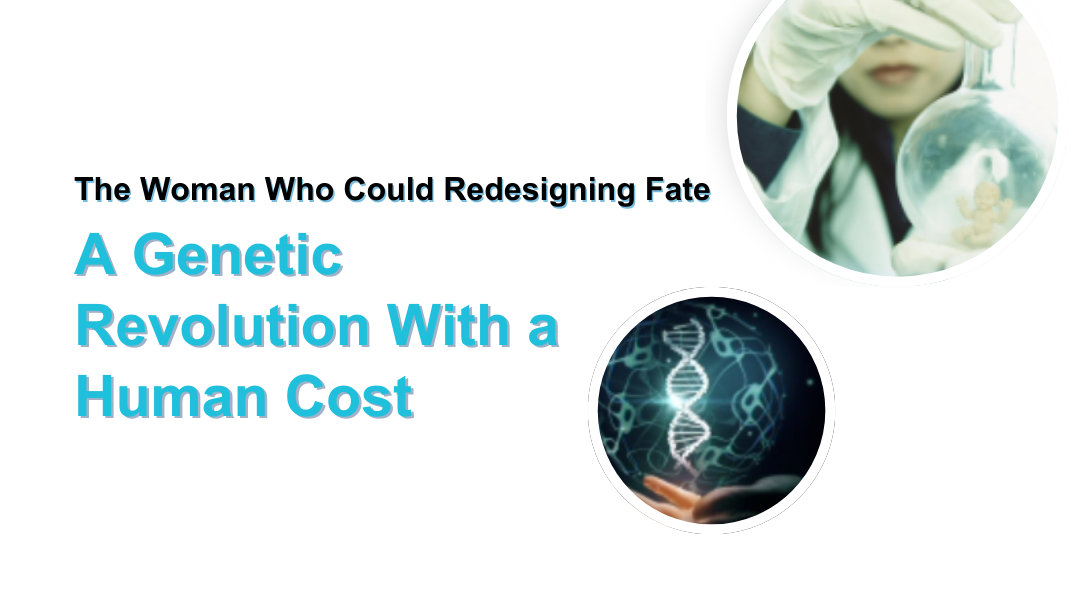Prologue: A Discovery That Split the Future in Two
Gene therapy labs had buzzed about Elena Rodriguez for years. The 42-year-old molecular biologist was obsessive, the kind of scientist who slept in her lab coat. But in 2043, she cracked something bigger than anyone expected—a gene-editing system so precise it could fix DNA errors like a backspace key for biology. They called it WhisperGen.
The world called it a miracle. Then the trouble started.
The Breakthrough That Worked Too Well
Rodriguez’s tech made CRISPR look like a blunt instrument. WhisperGen used quantum-guided enzymes that could:
- Edit single base pairs without disturbing neighboring genes
- Reverse epigenetic damage from aging and toxins
- Work in adults, not just embryos
When she published the paper, the medical world lost its mind. Pharma CEOs offered blank checks. Bioethicists started drafting resignation letters.
The First Patient: A Boy Who Should Have Died
Liam Chen’s parents brought him to Geneva when he was five. His spinal muscular atrophy (SMA Type 1) had already stolen his ability to swallow. Clinical trials were his last chance.
The procedure was terrifyingly simple:
- Day 0: WhisperGen-loaded nanocarriers entered his spinal fluid
- Day 3: His SMN2 gene started producing functional protein
- Day 14: He squeezed his mother’s finger for the first time
By month six, he was learning to walk. The videos went viral—a toddler rising from a wheelchair as doctors wept.
The Backlash No One Predicted
Then came the complications:
- Black market “gene tune-ups”: Millionaires in Dubai paid $2M for edits to boost muscle growth and cognition
- A botched memory enhancement left a Stanford student with permanent synesthesia
- Religious groups called it “playing God,” while transhumanists demanded unrestricted access
Rodriguez found herself testifying before the UN by 2045. “I wanted to cure diseases,” she told them, “not create a new eugenics movement.”
The Compromise That Saved (Maybe) Humanity
The 2047 Genetic Accord established brutal safeguards:
- Cures only: No enhancements, no germline edits
- Global oversight: A WHO taskforce with veto power
- Price caps: Treatments couldn’t cost more than open-heart surgery
It wasn’t perfect. Underground “gene clubs” still flourished. But when Rodriguez’s team eradicated sickle cell across West Africa by 2050, even critics paused.
Epilogue: The Weight of the Edit
Now 76, Rodriguez walks me through her Geneva clinic where former patients—now adults—work as counselors. One young man shows me the scar where his Huntington’s disease vanished. A little girl draws pictures of the sister she’ll never know, who died of Tay-Sachs the year before WhisperGen’s approval.
“We didn’t solve mortality,” Rodriguez says, watching a toddler chase bubbles in the rehab garden. “We just gave people their fair shot at life.”
Then she shows me the locked lab where her team still works. Because somewhere out there, someone else is building the next WhisperGen. And this time, they might not care about the rules.
